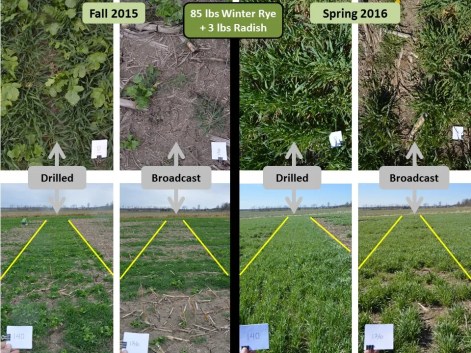By Cheryl Cesario, Grazing Outreach Professional
When farmers are considering grazing as a new management practice, or want to change or improve an existing system, there are many questions from both the animal perspective and the land perspective: Is this going to work? Will my animals like it? What will this look like? How will I do it?
These are all reasonable questions, which are not easily answered in a one or two-hour farm visit. I find the most successful grazing systems develop when there is farmer involvement in the planning process, and the farmer has a good relationship with a service provider and other farmers who can answer questions and share ideas.
This fall we will start offering a new grazing management course for farmers who want to learn about the benefits and challenges of grazing – from both economic and environmental perspectives. Each farmer will develop a plan specific to their operation which takes into account their
farm goals. The class will meet once per week over the course of a month, and each farmer will receive a copy of Sarah Flack’s book The Art and
Science of Grazing as the course textbook and helpful future reference. Outside of class, one-on-one farm visits will provide additional support
as new practices and strategies are implemented on the ground.
Here is a sampling of what the class will cover:
• Pasture plant identification of common species, looking at favorable growth conditions and how plants respond to grazing impact.
• Pasture nutrition – how it can affect grazing behavior, overall intake, and animal performance.
• Grazing management concepts such as measuring dry matter availability, determining paddock sizes, stocking rate versus stock
density and overall acreage requirements.
• Soil health in pasture systems and the benefits of soil, forage and manure testing to understand nutrient cycling and nutrient management within pasture systems.
• Pasture system design to determine infrastructure needs, and management techniques to avoid overgrazing damage, decreased
carrying capacity and other negative impacts.
• Grazing record keeping systems and the benefits of monitoring and documenting activities.
Eligible farmers will be able to use the grazing plan they develop in class to apply for USDA Natural Resources Conservation Service (NRCS) funding opportunities to help cost-share a variety of grazing practices. However, new infrastructure alone will not create improvements. Achieving healthy pasture ecosystems requires an understanding of the relationship between the soil, the plants and livestock grazing behavior. A clear goal and a plan based on plant and animal needs are essential for success. We anticipate the course will run from mid-October to mid-November, with up to 12 hours of classroom and planning time. If you are interested in participating, or want to know more, please contact me:
cheryl.cesario@uvm.edu; (802) 388-4969 x346
Successful grazing plans can include laneways to reduce mud and erosion, as seen in photos before installation (above left) and after (above right). Stream crossings and water tubs eliminate animal impact on surface waters (below).













